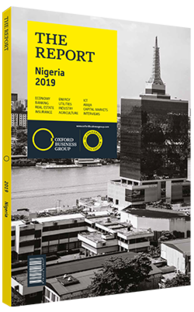Efforts towards diversification must be expanded in Nigeria
Although the Nigerian economy has continued to achieve positive growth as it recovers from the oil price shock and the 2016 recession, more remains to be done to achieve economic diversification. According to the National Bureau of Statistics, the economy grew by 0.8% in 2017, compared to a contraction of 1.6% in 2016, driven primarily by a recovery in international oil prices and increased domestic output.
These improved economic fortunes have brought with them a number of positive developments. Inflation stabilised at around 13% in mid-2018, down from a high of 18.7% in January 2017. Furthermore, foreign currency reserves rose from $29bn in May 2015 to $48bn in May 2018. Investor confidence appears robust, with 85% of the 124 respondents taking part in OBG’s 2018 Business Barometer: Nigeria CEO Survey, published in September 2018, saying that they had positive or very positive expectations of local business conditions in the coming 12 months. This testifies to a certain level of stability and optimism among the country’s business community. That said, in the World Bank’s “Doing Business 2019”, Nigeria dropped by one place to rank 146 out of 190 economies, suggesting there is further room for improvement and economic reform.
Fragile Recovery
Nigeria still has some way to go before it is able to fully celebrate its recovery, as growth in the first quarter of 2018 slowed to 1.95%, from 2.11% in the final quarter of 2017. The structure of Nigeria’s economy continues to be heavily dependent on receipts generated from its hydrocarbons industry, which accounts for around two-thirds of government revenue, leaving it susceptible to fluctuations in commodity prices. Despite attempts to diversify the nation’s revenue base, the non-oil sector grew by a mere 0.8% in the first quarter of 2018, compared to the oil sector’s 14.8%.
In May 2018 the country unveiled a record budget of N9.12trn ($25.2bn) in a bid to stimulate growth and bring the economy back onto a surer footing. But transforming the structure of Africa’s economic powerhouse and most populous nation will be no easy task. While the country has key advantages – including its strategic location, abundant natural resources and vast youth population – it still faces a number of challenges that the current administration has striven to address since 2015. Among these are questions of security, especially in relation to the Islamist insurgency in the north.
Expanding Credit
Another barrier to growth is access to credit. This issue is particularly acute for micro-, small and medium-sized enterprises (MSMEs), which make up around 60% of the economy and are particularly dominant in sectors vital to the country’s plans for economic diversification, such as agriculture. Access remains difficult, despite efforts to address this challenge, such as the creation of the Development Bank of Nigeria (DBN) in 2017 to facilitate lending to small-scale enterprises via local commercial banks and microfinance institutions.
According to the DBN, only an estimated 5% of Nigeria’s 37m MSMEs are able to access credit through the traditional financial system, even though they contribute more than 50% to GDP. Easing access to credit for entrepreneurs is therefore crucial to unlocking the country’s economic fortunes. This is also likely to have positive implications in terms of job creation, especially among young people.
Nigeria’s return to positive growth in 2017 is certainly reassuring for both the domestic and international business community, and puts the economy on a surer footing. According to the IMF, GDP in 2018 is expected to grow by 1.9% in 2018 and 2.3% in 2019. It is no secret, however, that most of this growth is likely to continue to be driven by oil, and will for this reason be subject to potential price fluctuations in the short term, before medium- to long-term plans to provide for a more diverse economy come to fruition.
You have reached the limit of premium articles you can view for free.
Choose from the options below to purchase print or digital editions of our Reports. You can also purchase a website subscription giving you unlimited access to all of our Reports online for 12 months.
If you have already purchased this Report or have a website subscription, please login to continue.

